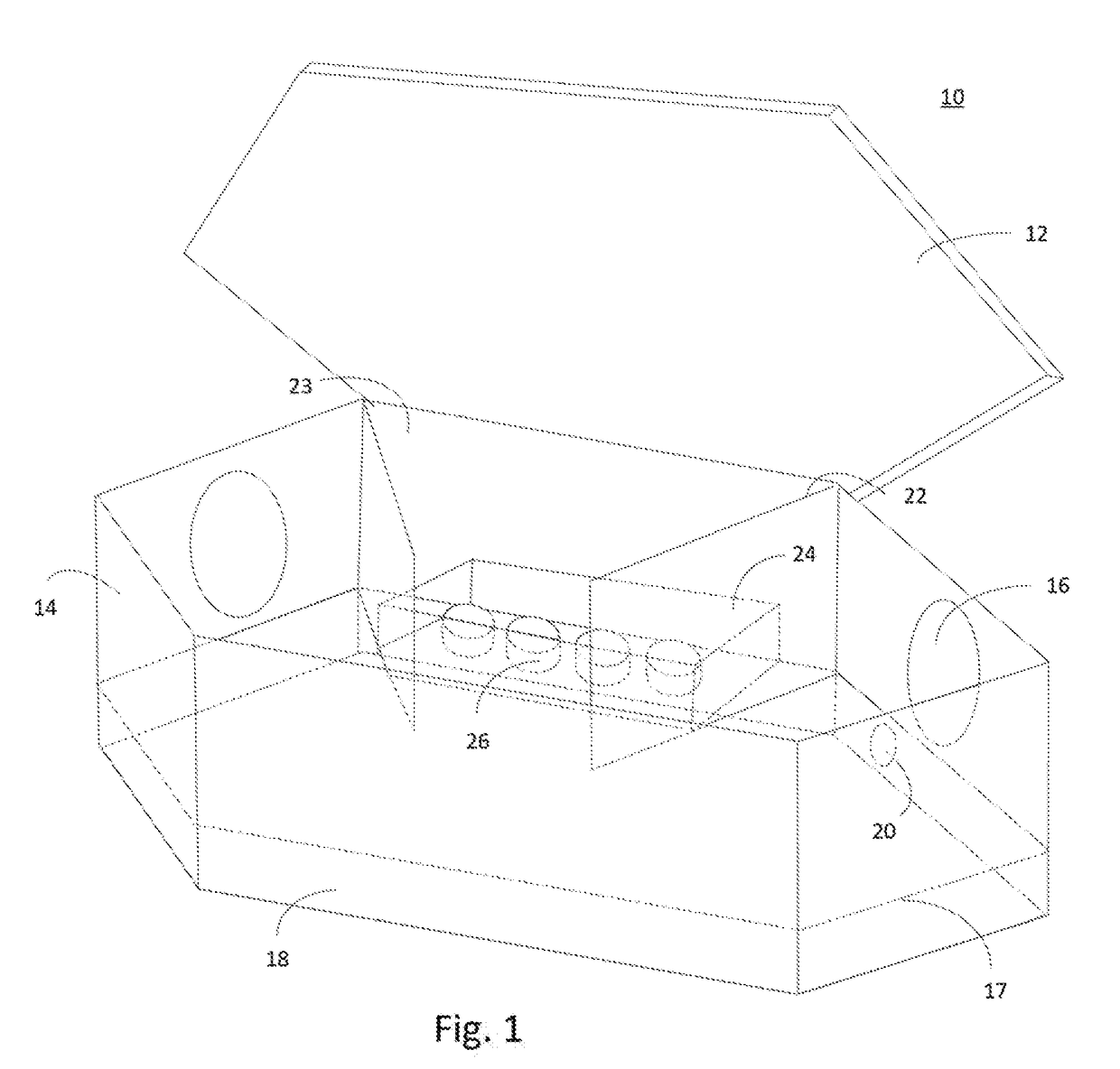Self Anchoring Rodent Bait Station
a bait station and self-anchored technology, applied in the field of self-anchored rodent bait stations, can solve the problems of serious pests, food eating and spoiling, rodent infestation, etc., and achieve the effect of convenient transportation
- Summary
- Abstract
- Description
- Claims
- Application Information
AI Technical Summary
Benefits of technology
Problems solved by technology
Method used
Image
Examples
Embodiment Construction
[0017]FIG. 1 depicts the bait station of this invention in a front perspective view. In FIG. 1, a bait station 10 has a closable lid 12. The lid may be secured when closed to prevent tampering or accidental opening and exposing of the rodenticide if the bait station should be dislodged from its installation. Secure closure can be achieved in a number of ways, including the use of screws, a location transition or location interference fit, or any other standard fitting that secures the lid in a closed position while still permitting a subsequent reopening. Closure mechanisms (not shown) are well known in the art, and any suitable closure method may be used to secure the lid. The bait station has two access openings 16 through which targeted rodents may enter or leave the interior space 14 within the upper portion of the bait station. An isolated weight compartment 18 is beneath and is separated from the interior space 14 by a floor 17. Weight compartment 18 can hold water, sand, or o...
PUM
 Login to View More
Login to View More Abstract
Description
Claims
Application Information
 Login to View More
Login to View More - R&D
- Intellectual Property
- Life Sciences
- Materials
- Tech Scout
- Unparalleled Data Quality
- Higher Quality Content
- 60% Fewer Hallucinations
Browse by: Latest US Patents, China's latest patents, Technical Efficacy Thesaurus, Application Domain, Technology Topic, Popular Technical Reports.
© 2025 PatSnap. All rights reserved.Legal|Privacy policy|Modern Slavery Act Transparency Statement|Sitemap|About US| Contact US: help@patsnap.com



